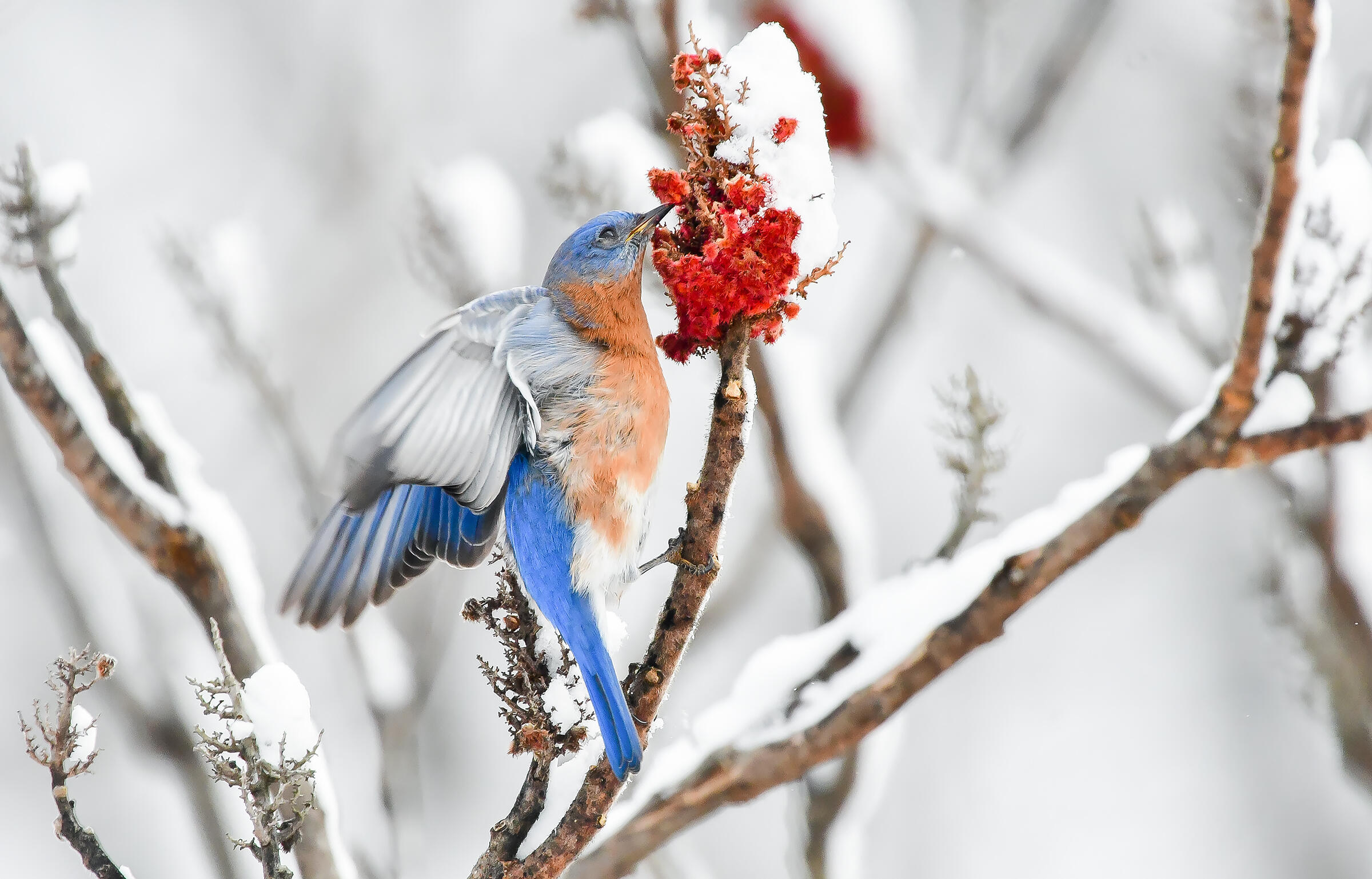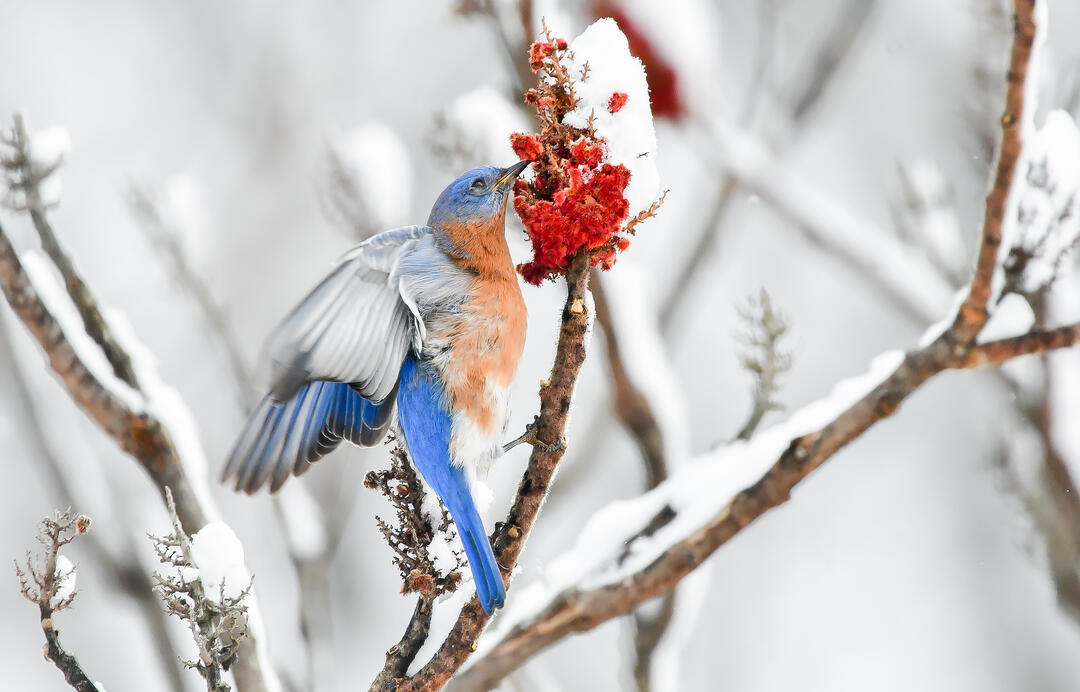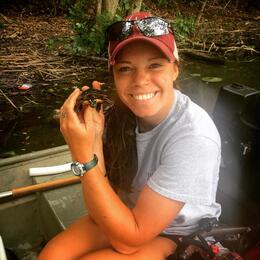Written by Conservation Research Fellow, Cassie Wolfanger. This fellowship is generously supported by Audubon Vermont and the Lake Champlain Sea Grant Institute.
As I’ve winced at the reading on my outdoor thermometer in the sustained subzero temperatures we’ve experienced this winter in Vermont, I've found myself looking out my window wondering: “How on earth are animals surviving out there?” I’m often chilled inside my heat-controlled home, even as I’m dressed in wool clothing and holding a hot cup of tea. Are humans fragile or birds especially hardy? Likely both.
To Migrate or to Stay?
I suppose the first thing to mention is that most birds actually don’t endure these conditions; they leave to escape the cold. In fact, a majority of North American bird species—about two thirds—migrate long distances south each year. Some fly to the southern U.S. and Mexico, some fly thousands of miles to Central and South America. Migration is an arduous and dangerous journey, requiring the expenditure of extreme amounts of energy and risking vulnerability to storms and refuel shortages. But those long distance migraters are constrained by their diet. They eat food that isn’t readily available during the winter time such as insects (think warblers, swallows, and flycatchers) or fish (think Osprey who aren’t guaranteed access to open water). As for our hardy resident species that choose to stay, they may have a competitive advantage to defending territories come breeding season since they are more familiar with their surroundings, but there are significant trade-offs.
Food is the Limiting Factor in Winter
Winter is tough for several reasons: temperatures are low, hours of daylight are shorter, and food is scarcer. Birds are endotherms, meaning they are warm-blooded animals that generate heat as a byproduct of chemical reactions in their bodies and must regulate and maintain this temperature within a narrow and specific range at approximately 105 (102-109) degrees Fahrenheit. Food fuels this heat generation, and when heat is lost more rapidly in colder temperatures, birds have to eat more and ramp up their metabolism to compensate. Most birds are only active during daylight hours. So exactly at the time of year when they need more food to keep warm and sustain their needs, they have less time to forage for it and there is less food available.
Behavioral Strategies
There are several behaviors birds exhibit to conserve energy and reduce caloric requirements. Many species can be seen fluffing up their feathers to increase the size of air pockets that are trapping heat close to their skin.
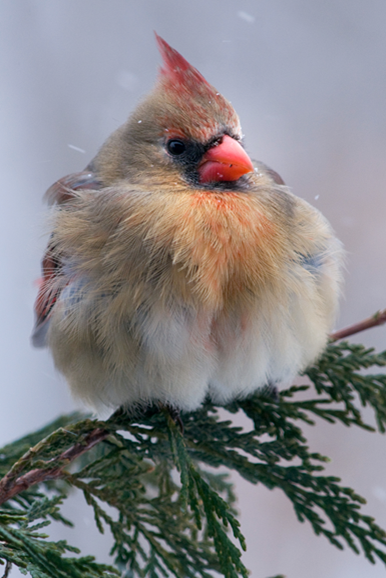
You might also see birds congregating in larger groups during the winter for both safety in numbers and because some groups such as bluebirds are known to physically huddle up and share body heat. It is not uncommon to see water birds tuck their faces into the scapular feathers on their back or tuck their legs close to their body to minimize heat loss since these body parts are not well insulated.
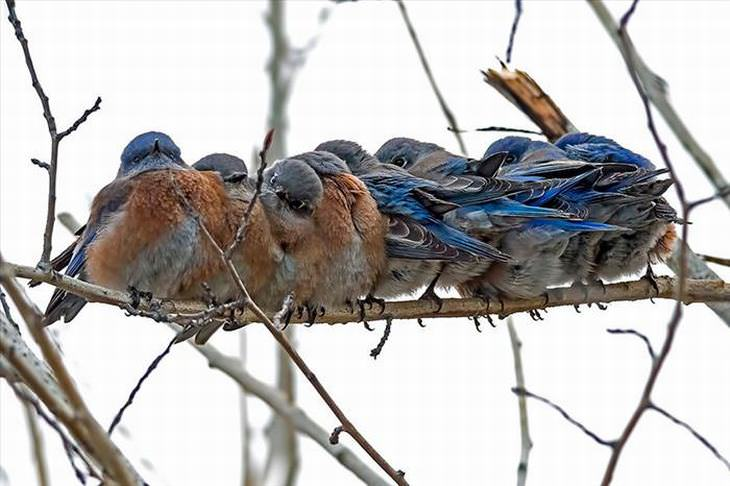
A lot of woodland birds seek shelter in warmer microclimates by taking refuge in brush thickets or using roosting cavities. Woodpeckers chisel out holes in snags separate from their nesting cavities and other songbirds will use retired holes woodpeckers have made. Ruffed Grouse will actually burrow into the snow! Snow has surprisingly insulating properties and grouse are large and dense enough that if the snow crusted over, they would be able to dig themselves out.
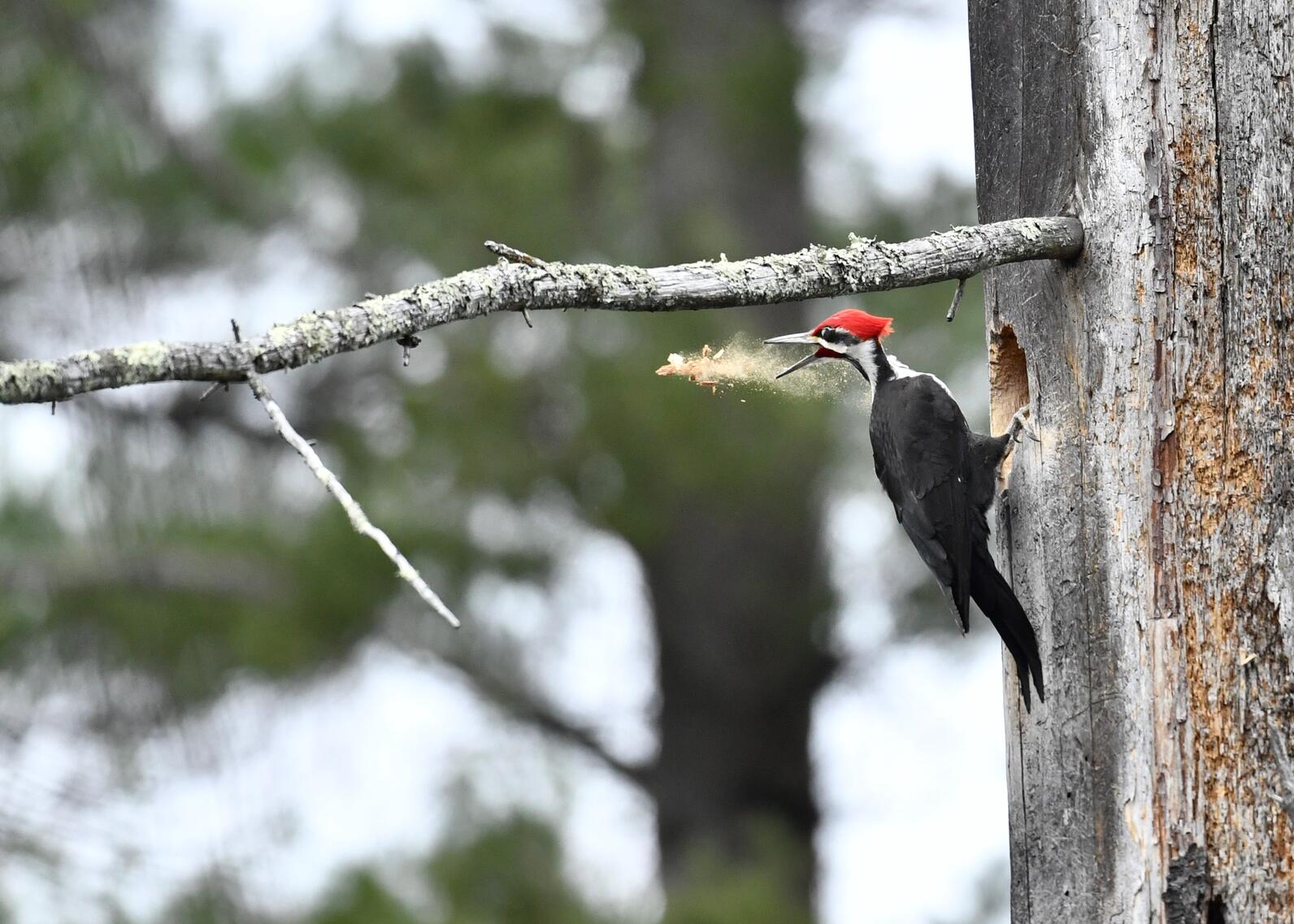
Most notable of behavioral changes during the wintertime, are those that involve foraging. Many birds move according to food availability or when lousy conditions force them to, such as a storm event or severe wind and precipitation at high elevations. A behavior that is especially prominent in woodpeckers, chickadees, titmice, and corvids like jays and crows, is caching food. Ever wonder why birds grab a seed from your feeder and fly off with it only to return a few minutes later to repeat the process? Sure they’re eating some, but they’re also storing many away in secret hiding spots for later. These birds can remember where seeds are hidden for days or weeks. Interesting research from Cornell on Black-capped Chickadees that they tagged with backpack trackers found that individuals were visiting feeders over 200 times per day and stashing their prizes within 150 feet of the feeder under nooks and crannies in bark or even structures on homes such as shingles and siding.
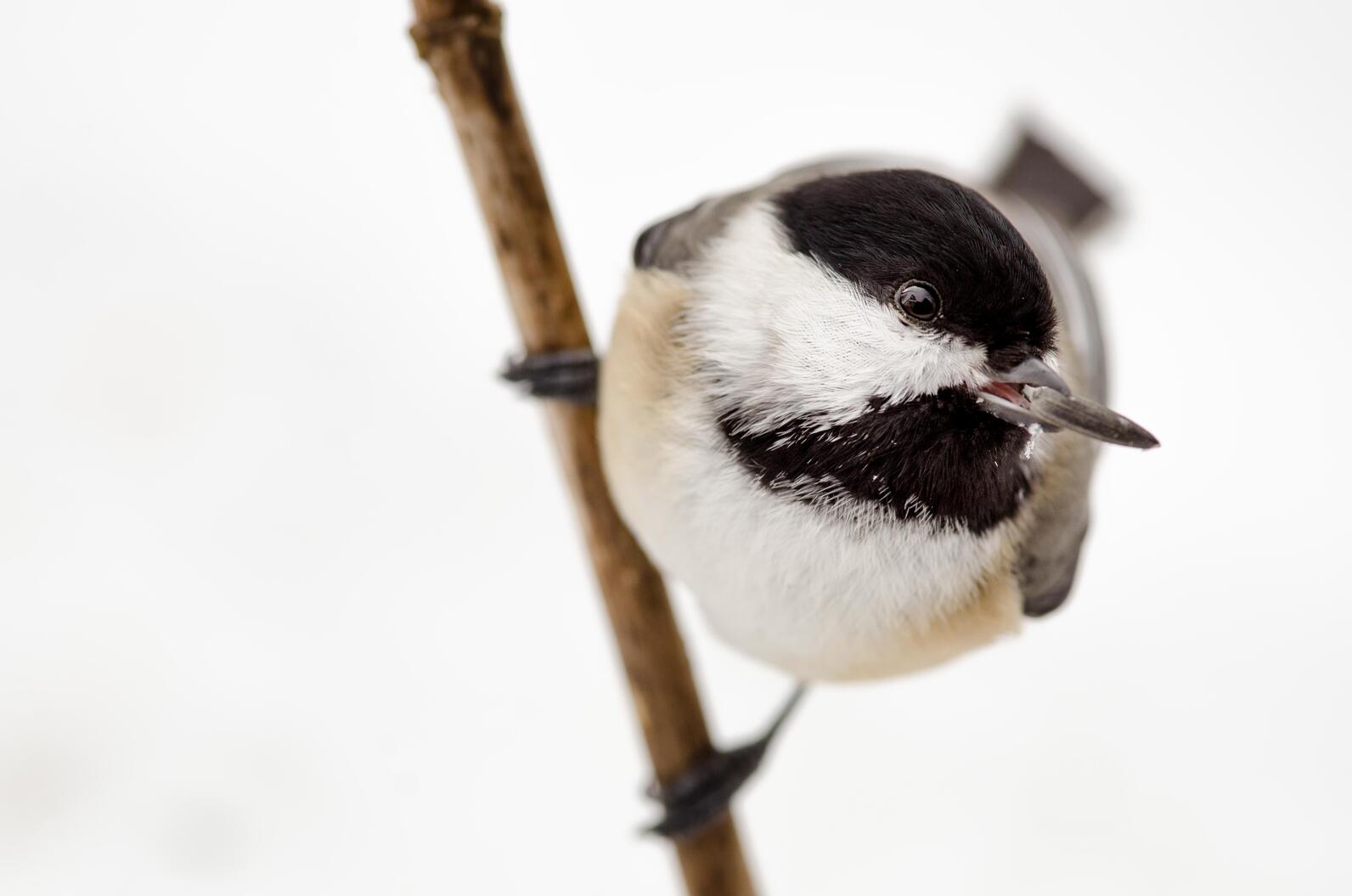
Anatomical and Physiological Adaptations
Working in concert with this caching behavior, is an adaptation involving the reversible memory capacity in a portion of the brain, called the hippocampus, which is responsible for spatial data storage. As winter approaches, this region of the brain starts to produce more brain cells and continues to grow larger throughout the winter to handle the huge amount of cache data like a computer hard drive. Then, come spring, when resources become more available and reliance on food stores drops, caching behavior dwindles, and that area in the brain shrinks again. Brain cells use a lot of energy, so to conserve resources, the extra cells last only as long as they are needed. Amazing!
I would be remiss if I did not mention feathers as one of the most obvious physiological adaptations unique to birds for survival in the winter. On a structural level, feathers are an ingenious evolutionary design. Air pockets between barbules of fluffy down feathers of under layers trap heat and contour body feathers on outer layers deflect wind and precipitation, working together for supreme insulation. Not unlike mammals growing a thicker winter coat of hair, birds also grow more feathers when they molt from their breeding plumage in the fall to non-breeding plumage in preparation for winter. Take these photos of the same species—the American Goldfinch—for instance, whose body shape and bright colors in the summer are a stark contrast to his cozy and drab winter coat.
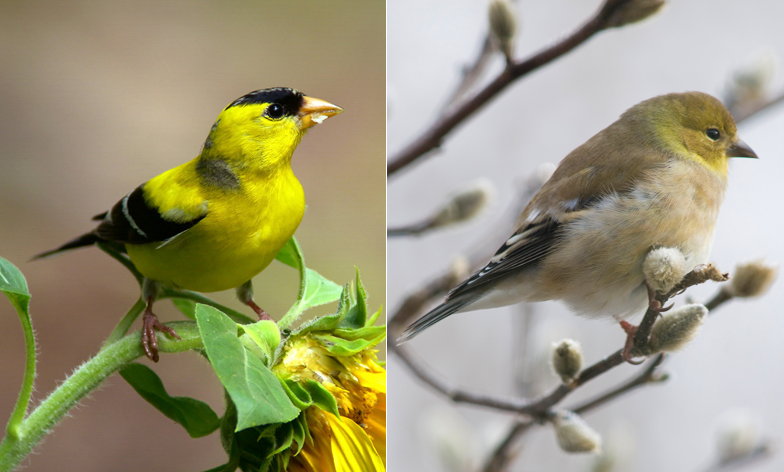
Also similar to mammals, birds can contract large muscles to shiver and generate extra heat. As weather shifts to lower temperatures for winter, some physiological changes occur on the cellular level over days and weeks for the purpose of making the metabolism more efficient. This is called acclimatization and it’s basically getting one’s body used to the current conditions.
Nights in the winter get especially cold, and this is when birds might go into a controlled hypothermia called torpor. Their heart rate and metabolism slow and body temperature can drop from around 105 down to about 80 degrees Fahrenheit! This allows for much less oxygen use and a valuable conservation of energy. Can you imagine us humans regularly dropping our body temperatures over 20%? We quite literally would not survive. Birds go into torpor usually only for a few hours at a time and usually only at night because in this lethargic state, they are not able to respond to external stimuli as readily, leaving them more vulnerable to predators.
This last physiological adaptation that I'll mention might amaze me the most. Regional heterothermy allows the exposed feet and legs to cool to almost ambient temperature, just above freezing without cooling the rest of the body. This happens through counter-current heat exchange, which has to do with the way blood vessels are arranged in the circulatory system of the legs. In mammals, there is significant tissue separating arteries and veins in the limbs, which maintain a constant temperature close to the temperature of the rest of the body. However, in birds, the arteries and veins in their lower legs are in direct contact with each other, running parallel in opposite directions. Because of this close contact, warm blood in the arteries from the heart and cold blood in veins leaving the legs can exchange heat through a lateral transfer. This essentially prepares that blood for its next destination in the body more efficiently and conserves energy.
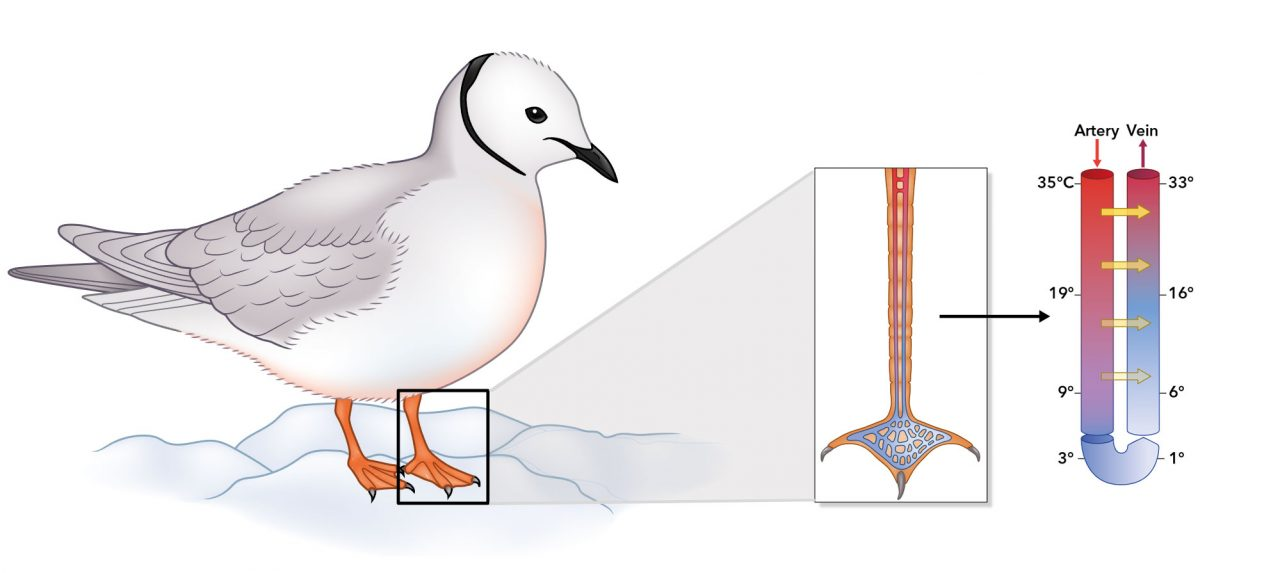
After learning about these behavioral and physiological adaptations that birds use to survive the winter, I can now look outside my window with more understanding of how they might do it, but with no less admiration and wonderment.
To watch a recording of the webinar I gave for Vermont Coverts on winter birds in Vermont with more information on common residents, irruptive species, northern arctic visitors, hotspots to see them, and how you can get involved in tracking and reporting them, click here, or watch the video below:

